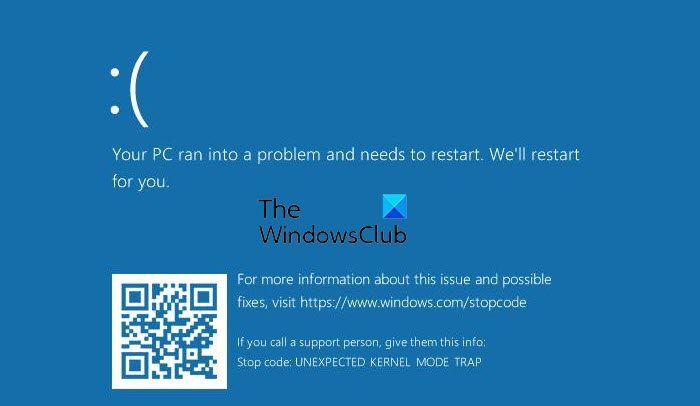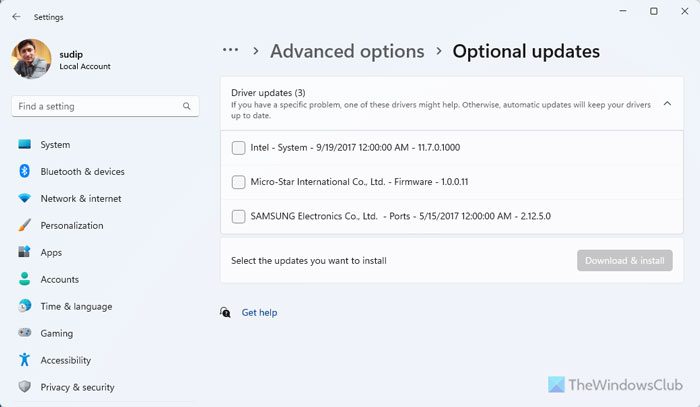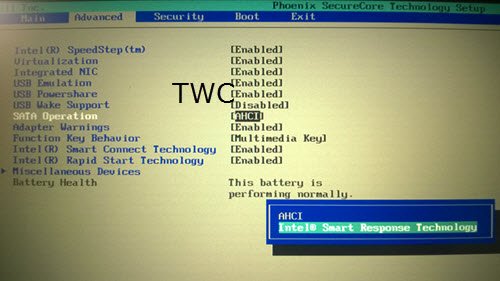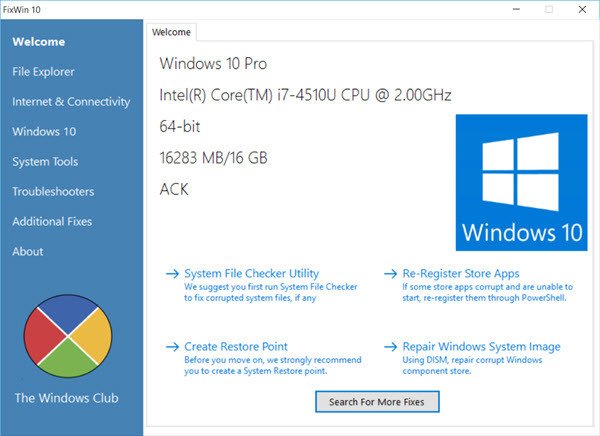When a CPU generates a trap or an exception, and the operating system kernel is not able to catch that particular trap, it gives out an annoying Blue Screen with the error message UNEXPECTED_KERNEL_MODE_TRAP. The error code for this BSOD is 0x00000007F. This bug check indicates that the Intel CPU generated a trap and the kernel failed to catch this trap. The common cause is hardware failure due to faulty memory.

Fix UNEXPECTED KERNEL MODE TRAP Blue Screen
To fix the UNEXPECTED_KERNEL_MODE_TRAP error in Windows 11/10, follow these instructions:
- Check newly installed hardware or software
- Update device drivers
- Use the Memory Diagnostic Tool to check RAM
- Disable Memory caching in BIOS
- Use System File Checker
- Clean the dust on the hardware manually
To learn more about these solutions, continue reading.
1] Check newly installed hardware or software
If you have installed new Hardware or Software to your computer, that might be a cause of this BSOD error. The main reason behind this can be the incompatibility between the components of the computer.
The software may not be officially supported for Windows 11/10 and might be running in compatibility mode. Similarly, the hardware might not be compatible with the other hardware, or in some cases, the hardware might be so old that the drivers of that hardware component might not support the operating system itself.
You may also disconnect all the external devices like printers, scanners, USB drives, etc., and then restart your computer. Then add the devices one after the other and see if any of these give you the Blue Screen.
You can also perform a Clean Boot and try fixing this error manually.
2] Update device drivers

There is a strong possibility that the drivers installed on your computer are not compatible with Windows 11/10. Updating your drivers is not difficult.
To update device drivers in Windows 11, follow these steps:
- Open Windows Settings.
- Go to Windows Update > Advanced options > Optional updates > Driver updates.
- Select the driver updates you want to install.
- Click the Download & install button.
If you use Windows 10, just head to the Device Manager to do the needful. Or, you can just head to the Downloads section of your manufacturer’s website. Get all the drivers that are newer than what is installed on your computer.
Personally, I would recommend you update your Graphics Drivers, Network Drivers, Chipset Drivers, and Input Devices drivers.
3] Use the Memory Diagnostic Tool to check RAM
Using the Memory Diagnostic Tool is pretty straightforward.
First of all, Save all your important work.
Then, hit WINKEY + R to open the Run window. Now, type in the command mdsched.exe in the Run window. Reboot your computer.
After a reboot, perform a basic scan or go for the ‘Advanced’ options like ‘Test mix’ or ‘Pass count’.
Hit F10 to start the test.
Alternatively, you can also try to find & fix Memory Leaks.
4] Disable Memory caching in BIOS
To disable memory caching in the BIOS, start by opening the BIOS Setup Screen.

Then navigate to Advanced > Cache Memory and Disable it.
Hit the F10 key to save the changes and reboot your computer.
5] Use System File Checker
Start by pressing the WINKEY + X button combo or right-click on the Start button and click on Command Prompt (Admin) or just search for cmd in the Cortana search box, right-click on the Command Prompt icon, and click on Run as Administrator. Click on Yes for the UAC or User Account Control prompt that you get. Then, the Command Prompt window will finally be open. Now, type in the following command to run System File Checker and then hit Enter.
sfc /scannow
Restart your system after the scan is completed.
You can also use our freeware FixWin to Run the System File Checker utility with a click.

6] Clean the dust on the hardware manually
You can also try cleaning the dust off the computer’s components. I recommend using a small blower or rubbing the components with a soft cloth. Make sure that you do not damage any parts with moisture or any circuits while carrying out this task.
Ensure you do this carefully because even a slight bruise can cause your computer to stop working and may cause you financial expenses. If you are not confident, you can ask a qualified technician to do this for you.
All the Best!
Read: INACCESSIBLE BOOT DEVICE error in Windows
What causes UNEXPECTED KERNEL MODE TRAP?
The main reason behind this UNEXPECTED KERNEL MODE TRAP error is the corrupt Memory or RAM. This problem can sometimes appear when you install a new RAM that doesn’t comply with the existing one. You can use the Windows Memory Diagnostic to fix this problem.
How to fix Critical Process Died in Windows 11?
The first thing you need to do to fix Critical Process Died error is to run the Hardware and Devices Troubleshooter via the Get Help app. Then, you can run the Driver Verifier Manager, and use the System File Checker. However, you can also use the Get Help app to run the Windows Blue Screen Troubleshooter.
Leave a Reply